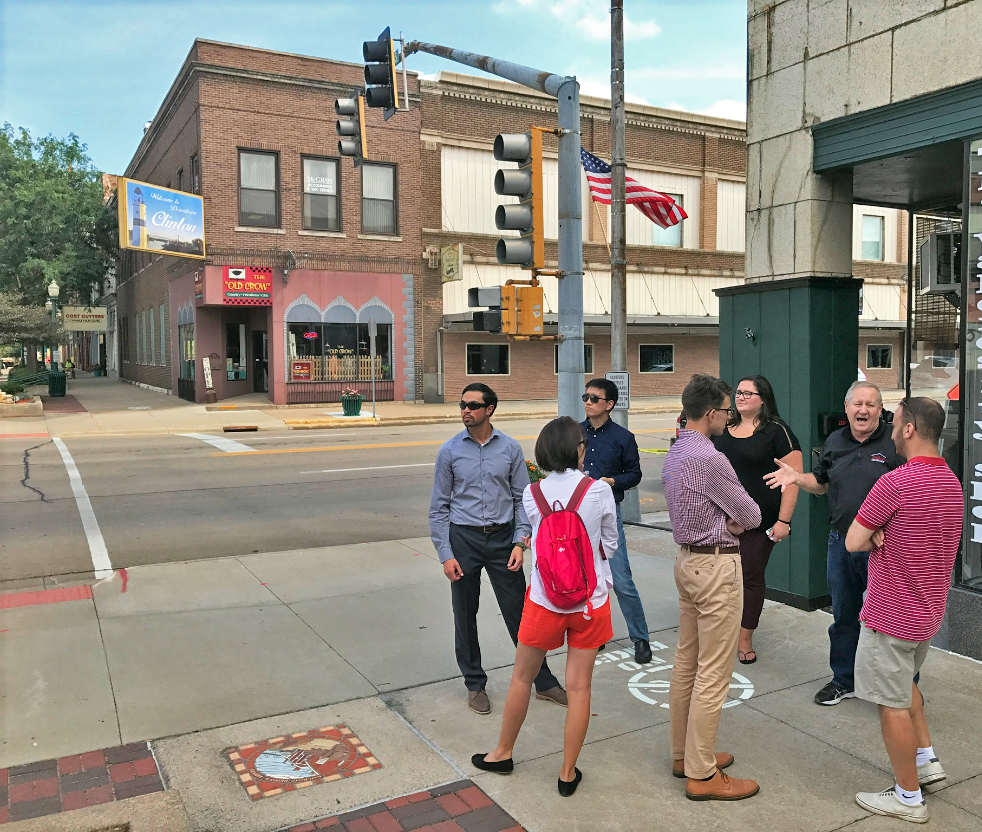Clinton Economic Development Plan
As part of their capstone project, second-year graduate students from the School of Urban & Regional Planning created an economic development plan for the City of Clinton and surrounding micropolitan area.
The City of Clinton was settled as a lumber community and grew into a thriving manufacturing center. Jobs after high school were easy to obtain with competitive wages and benefits package. Over the past few decades, Clinton has experienced a hollowing out of the downtown, a decrease in the livability from wages at manufacturing jobs, and an overall population decline. A Des Moines register article in March 2017 put a spotlight on the economic challenges facing the City of Clinton and other micropolitan areas throughout the state. The article describes a drastically changing economic landscape in Clinton, where the manufacturing sector has declined as the primary economic engine, followed by dwindling job opportunities, working-age residents, retail activity, and social capital. Recent economic trends are compelling community leaders to evaluate new directions for the community and shift the emphasis away from industrial business recruitment. STEM initiatives, entrepreneurial development, tourism, and quality of life strategies are mentioned as opportunities to build and retain a skilled workforce for a new economy.
An economic development plan provides a comprehensive overview of the economy, sets policy direction for economic growth, and identifies strategies, programs, and projects to improve the economy.
The plan developed by the graduate students serves as a foundation for economic development of the Clinton Micropolitan Statistical Area, which is the whole of Clinton County, with emphasis on the city of Clinton, Iowa. The plan approaches economic development through supporting area businesses and workers, while simultaneously enhancing quality of life for residents. This approach requires the plan to capitalize on Clinton’s assets and simultaneously overcome its weaknesses. In doing so, the plan identifies courses of action to provide greater opportunity and thereby prosperity, which are the ultimate goals of economic development initiatives.
The plan provides a set of economic development goals tailored to the future needs of Clinton. Strategies and action items to guide progress accompany each goal, and each action item is assigned to specific organizations to oversee implementation. Performance metrics are also included to measure progress towards the goals.
